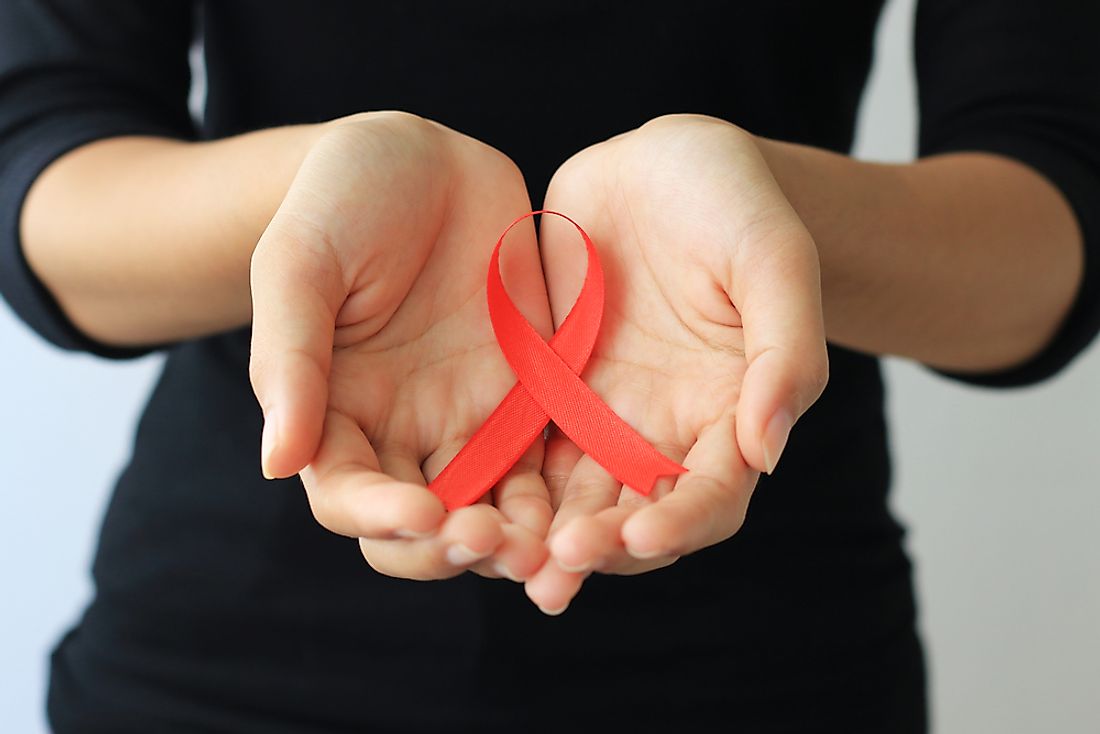Countries With The Highest Rates Of HIV Among Young Women

Human immunodeficiency virus (HIV) is a virus affecting the human immune system. According to the statistics presented by the non-governmental organization AVERT in 2013, the world experienced 380,000 new HIV infections among young women of ages between 15-24 years. This represented 60% of new infections globally. 80% of the total number of women infected globally were from Sub-Saharan Africa.
Which countries of the world have the highest prevalence?
The Eastern and Southern African countries of Sub-Saharan Africa have experienced the highest prevalence of HIV infection among young women. These regions continue to be the epicenter of the epidemic. According to the statistics presented by UNICEF in 2008, the number of young women compared to males that contracted HIV and Aids was 1.9 million to 780,0000. Females have been affected over two times more than their male counterparts.
In Swaziland, the number of adolescent girls infected with HIV is four times that of males at (6.2 percent versus 1.4 percent). Lesotho has a similar rate (6.1 percent compared with 1.6 percent). Some recent statistics has also shown that South Africa also poses a high ratio of HIV infection of young females to their male peers at a ratio of eight adolescent women to one male.
Why Young Women?
Lack of education access
Evidence has shown that the level of education has had a relation to the spread of HIV among young women. When young women attend school, they are able to get the education about HIV and how the disease is transmitted, treated and managed. In many Sub-Saharan countries, only 25% of women have attained sex education.
Intimate partner violence (IPV) and gender inequality
IPV and gender inequality has prevented young women from avoiding HIV infection. A study carried out in South Africa reveiled that adolescent women who were exposed to IPV were 50% more likely to be infected with HIV compared to those who did not experience violence.
Lack of access to proper health services
Many young women from some Sub-Saharan countries can not access health facilities freely. This makes taking care of their own sexual health difficult. In some countries, the providers healthcare services lack the proper training to provide youth-friendly services.
Prevention programs for young women
WHO, together with other humanitarian programs, have partnered to bring down the number of young women infected with HIV. Such programs include Cash transfers that have helped reduce poverty and hence reduce the need for young women to participate in commercial sex business among low and middle-income earners, addressing violence among young women to help reduce HIV infection, offering counseling services through school-based interventions and formulating laws that prevent gender violence.
HIV treatment for young women
WHO provided guidelines in 2013 that enabled all pregnant women living with HIV to be administered an antiretroviral treatment (ART).
Despite the 27% who lack access to ARTs, a significant step has been made in preventing mother-to-child transmission (PMTCT).
Conclusion
There is an ever-increasing need in Sub-Saharan countries to implement effective HIV prevention measures among young women who have little to no control over gender violence, abusive relationship, condom use,and general sex education. The humanitarian organizations should join forces with governments in fighting this common enemy.
Countries With The Highest Rates Of HIV Among Young Women
| Rank | Country | HIV Prevalence, Women Ages 15-24 |
|---|---|---|
| 1 | Swaziland | 15.5% |
| 2 | Lesotho | 10.2% |
| 3 | Botswana | 8.9% |
| 4 | South Africa | 8.1% |
| 5 | Zimbabwe | 7.0% |
| 6 | Namibia | 5.0% |
| 7 | Zambia | 4.2% |
| 8 | Malawi | 4.1% |
| 9 | Uganda | 3.7% |
| 10 | Equatorial Guinea | 2.5% |
| 11 | Tanzania | 2.1% |
| 12 | Cameroon | 2.1% |
| 13 | Central African Republic | 2.0% |
| 14 | Guinea-Bissau | 1.5% |
| 15 | Ivory Coast | 1.4% |











